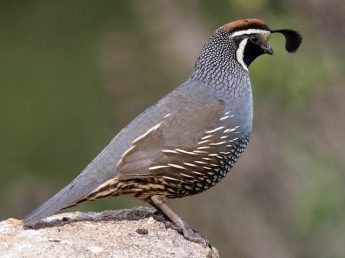Introduction
Quick Navigation
It is a usual thing to be concerned about how long your animal pet has to spend alive, and it differs just the way animal species are different. The various classes of animals have different duration of years which they can spend on earth, and this is known as lifespan. In simple terms, lifespan is the number of years an organism can exist. Mammals and reptiles tend to live longer than the other classes of animals which is a well-known fact.
Birds, on their part, live long animal species but some other animal species have a lifespan longer than theirs. This is as a result of the several factors which affect their survival and reduces their lifespan. Life for most birds is short when calculated in numbers of years. However, it is interesting to note that birds do not age like other animals. They are not subject to the diseases and physical limitations that come with aging. They also do not physically increase with the passing of time, thereby raising a problem in knowing and determining their age.
See also; cleaning hummingbird feeders
The lifespan of birds is determined by several factors. One of which is the bird species and scientific family. Bird’s size also has a role to play in the length of its life. This is because the metabolism process in larger animals is slower compared to smaller animals, and this makes larger animals age slower. This supports the fact that larger and bigger birds tend to live longer than their smaller counterparts. Environment and habitat also influence the lifespan of these flying creatures as these factors can either increase or decrease it. The conditions of living can also determine how long a bird would stay alive. Studies have even shown that birds survive longer in the wild than in captivity. However, the mortality rate and risks are much higher in their natural habitats.
Check also; cardinal bird symbolism and spiritual meaning
On an average plane, birds can survive for six years and more to about sixty-five or even seventy years. Predators are also known to live longer than most birds of prey considering their sizes and where they occupy on the food chain.
Most of the records of bird species usually taken are of those in captivity in natural reserves and bird parks. This is because it is extremely difficult to determine the number of years lived by birds in the wild.
Determining lifespan
Unlike other classes of animals like mammals and reptiles, the aging process of birds is not pronounced or visibly seen as once they develop plumage and mature, neither their wings, not feathers indicate signs of the passing time. This is solely peculiar to birds, whether flight enabled or not, making it often hard to determine their exact age. For wild birds, it is even much more complex as it is impossible to estimate by just looking at them. Most of the age-determining researches are carried out on birds in captivity and under apt surveillance.
Ornithologists, therefore, have developed a way to successfully calculate the ages of birds which is known as banding. This process involves putting tags on birds and recording the date from when they developed into adulthood. It has proven to be effective as even as time passes, these tags can be used as reference points in determining the bird’s age. Nest banding is even more precise as the exact date when the bird hatches are recorded, making it an even more accurate resource. In the advent of sickness or injuries over time, the band on the birds is then consulted to provide a sound basis for the calculating of the bird’s age.
See this: Can birds eat raisins
Another rough way of keeping records of a bird’s age is by raising it as a pet. This is regarded as an unconventional method as there are little or no scientific processes to it, but experiences and reports from bird owners have contributed to several pieces of research concerning the lifespan of birds. Because a bird is your pet, there is a high tendency that you will pay attention to it. Knowing this fact, observing your pet will give you vital information as to how long they can survive. Although this information cannot be regarded as accurate, it can be a good reference point.
Check this; can birds eat almonds
The lifespan of popular pets
Families have been known to keep birds as pets and to monitor them in the process. Several pet birds tend to live long as survival hazards and risks are reduced in the company of people. The following are the lifespan of some house birds:
House finches are small birds who live for about five to ten years but can survive for up to fifteen years. The average lifespan for lovebirds is ten years, but some live for up to double that time. Canaries and doves are known to live for about ten to fifteen years as pets and slightly longer for the ones that successfully survive the wild. Parakeets live for fifteen to twenty years. Parrots, in general, are long-living pets as the African grey parrot stays for as long as twenty-five years, while the Amazon parrot can live for close to fifty years as a pet.
The lifespan of popular birds
The Laysan albatross, which ranks among the world’s longest surviving birds, can live for as much as sixty-five years in captivity. Arctic tern can stay alive for thirty-four years, while the brown pelican can live for as long as twenty-five years. Great horned owl, mute swan, and red-tailed hawk have an average lifespan of twenty-five to twenty-seven years, while the great blue heron stays alive for twenty-three years. Birds like the Northern cardinal, American robin, and house sparrow can remain alive for thirteen to fifteen years.
See this: Blue footed booby
Conclusion
It is important to note that the average lifespans for the different bird species were deduced from a few of such species in captivity and natural bird parks. Having realized this, some wild birds can live longer or even shorter than their average lifespan due to the several factors involved in surviving in the wild. The average lifespan of a bird is not an exact estimate of how long it has on earth; it can only prepare you for what to expect.

